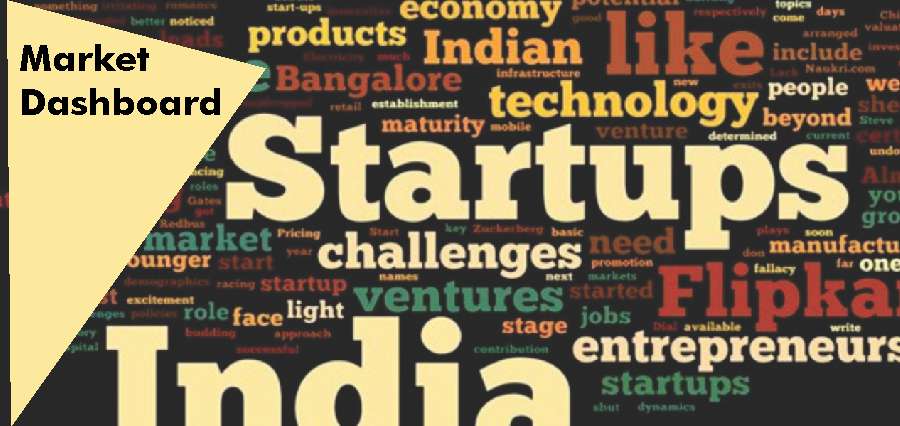In recent years, the Indian startup ecosystem has really taken off and come into focus on its own—driven by factors such as massive funding, consolidation activities, evolving technology and a burgeoning domestic market. The numbers are depicting—from approx. 3000 startups in 2014 to a projection of more than approx. 11000 by 2020, this is surely not a passing trend. It’s just a revolution. And in India, it’s will change the way the markets are working today.
Disruptive Startups from India
A lot of startups in India have entered in the industry either unearthing an entirely new market or through gaps in existing markets or product lines. Although there are various successful startups that are growing rapidly and changing how an existing industry works in the process like Paytm, Redbus, InMobi ,Housing.com, Zivame, AdPushup to name a few. This listing is not only exhaustive but it also serves as an appetizer for delving deep into the world of the Indian startup ecosystem which is the 4th largest on the entire planet.
Indian Startup Ecosystem Enablers
In India startups have given rise to more startups. Enablers, accelerators, and incubators are firms providing startups with growth advice and decision-making tools. From advising on government policies to act as market catalysts, they grow the maturity of young ventures. Enablers like iSpirt and NASSCOM brought together key stakeholders of the ecosystem including startup accelerators, incubators, venture capitalists, angel investors, support groups, technology corporations and mentors. Simply, their main aim is to provide funding and support for startups.
Closing Thoughts
While coming out of their difficult ruts Indian investors as well as investors abroad are becoming experimental, yet extremely well-informed decision makers. But still funding activities are the biggest driving factors in any startup ecosystem. The average valuation of an Indian startup is $2.3 million as compared to $4.2 million of an American one. 43 percent of product/digital organizations are focusing on the global market and 28 percent continue to be technology hotspots. With a 59 percent of B2C, 37 percent of B2B, and 4 percent of B2C/ B2B startups, this ecosystem has a lot of ground to cover in terms of securing funding.
What Indian Ecosystem Gets Right
Technology acquisition, customer acquisition, acqui-hiring and market consolidation are the main drivers for increase in M&A of Indian startups. With increase of momentum in M&A in India, investors are getting more exit opportunities. Startups are adopting innovative approaches to attract and retain top talent.
What It Gets Wrong
Indian startups are often asserted for copying foreign startups. It is seen quite often that they don’t have a proper scaling plan. There is always a need for directional efforts to help them in increasing their supportive government policies.
What Other Ecosystems Can Learn From This
Nowadays, startups are consolidating fast and eagerly buying other startups. Successful entrepreneurs are taking initiation to support other emerging startups by mentoring them through various channels. Young entrepreneurs are dominating the startup landscape with a larger percent of founders in the age bracket of less than 36 years. Women entrepreneurs have started becoming more prominent in the innovation economy.
In the near future, listing of various startups is touted to be the next big frontier. Every day, a lot is written about funded startups, unicorns, fund raising startups, that often, cockroach startups never get the limelight, even for the right reasons. Several companies are preparing for initial share sales, but these will most likely happen in startup heavens and not in India. Today, predictions made for startups are more in number compared to the startups themselves. But the interest these few companies are generating cannot be undermined.
Conclusion
To summarize in terms of revenue, growth and active userbase, entrepreneurs believe that they have done a fair job despite being a bootstrapped / self-funded and are already ahead compared to many funded startups in this space. The fast growing product and startup ecosystem in the country provides a platform to engage with thought leaders in the product space and discuss issues of common interest.One can only wonder what these funded competitors have been doing whose growth, revenue and active userbase is quite low. The pressure of investor is already mounting on a few who are ‘globally expanding to Malaysia, Indonesia’ for namesake! It is clear that they must be struggling to raise their next round of funding. Vanity metrics can only get them so far.

Insights Success stands as the epitome of trust and authority. It has earned its reputation as the foremost source of business intelligence, providing readers with a gateway to the pulse of Bharat’s advancing business landscape.
Quick Links
Enquiry
info@insightssuccess.in
for more information on advertising opportunities with Insights Success magazine.
8793630422 / 24
Reach out to Us
Insights Success Media and Technology Pvt. Ltd.
512, Brand Square,
Kunal Icon Rd, Pimple Saudagar,
Pune, Maharashtra 411027

